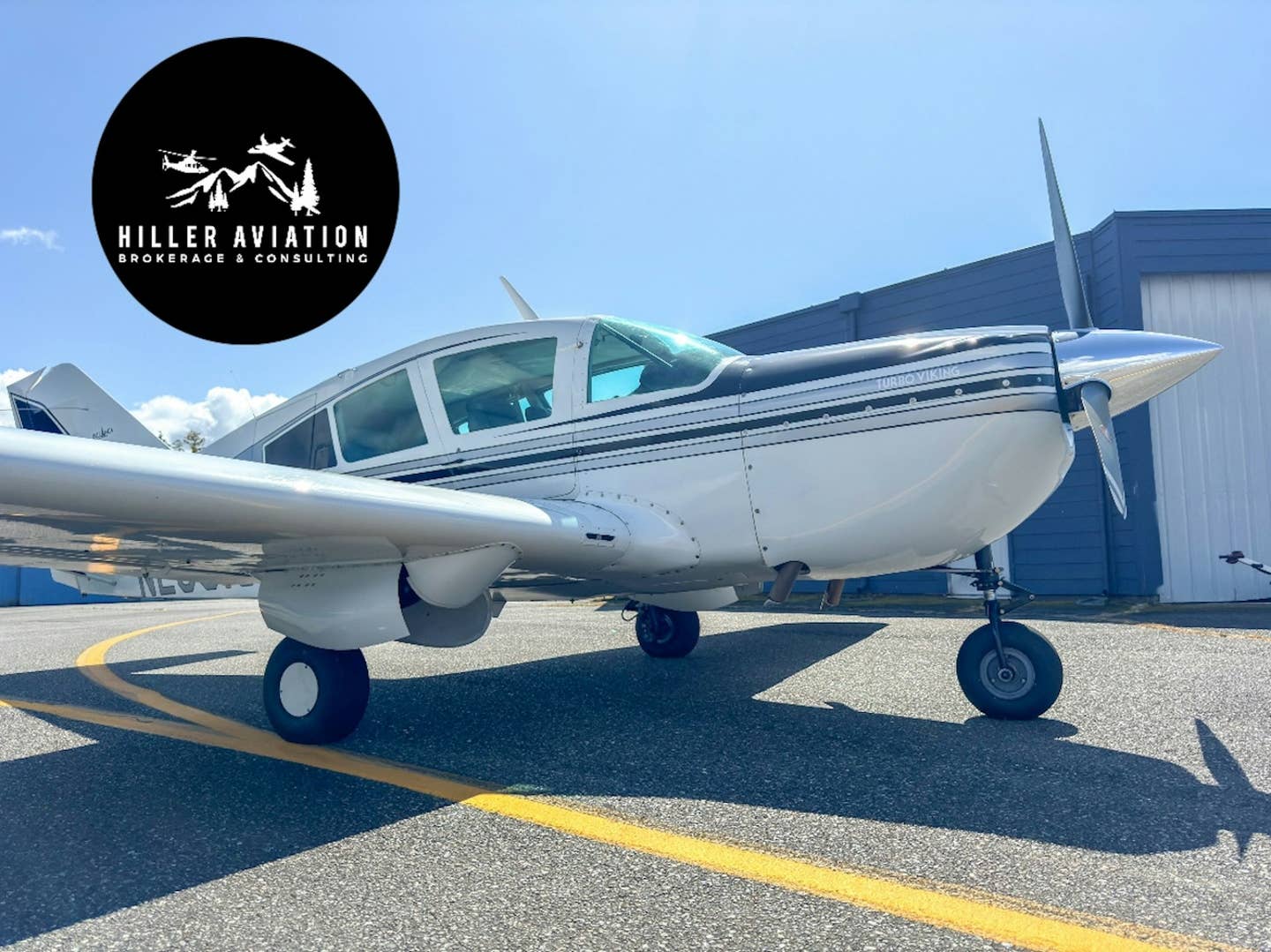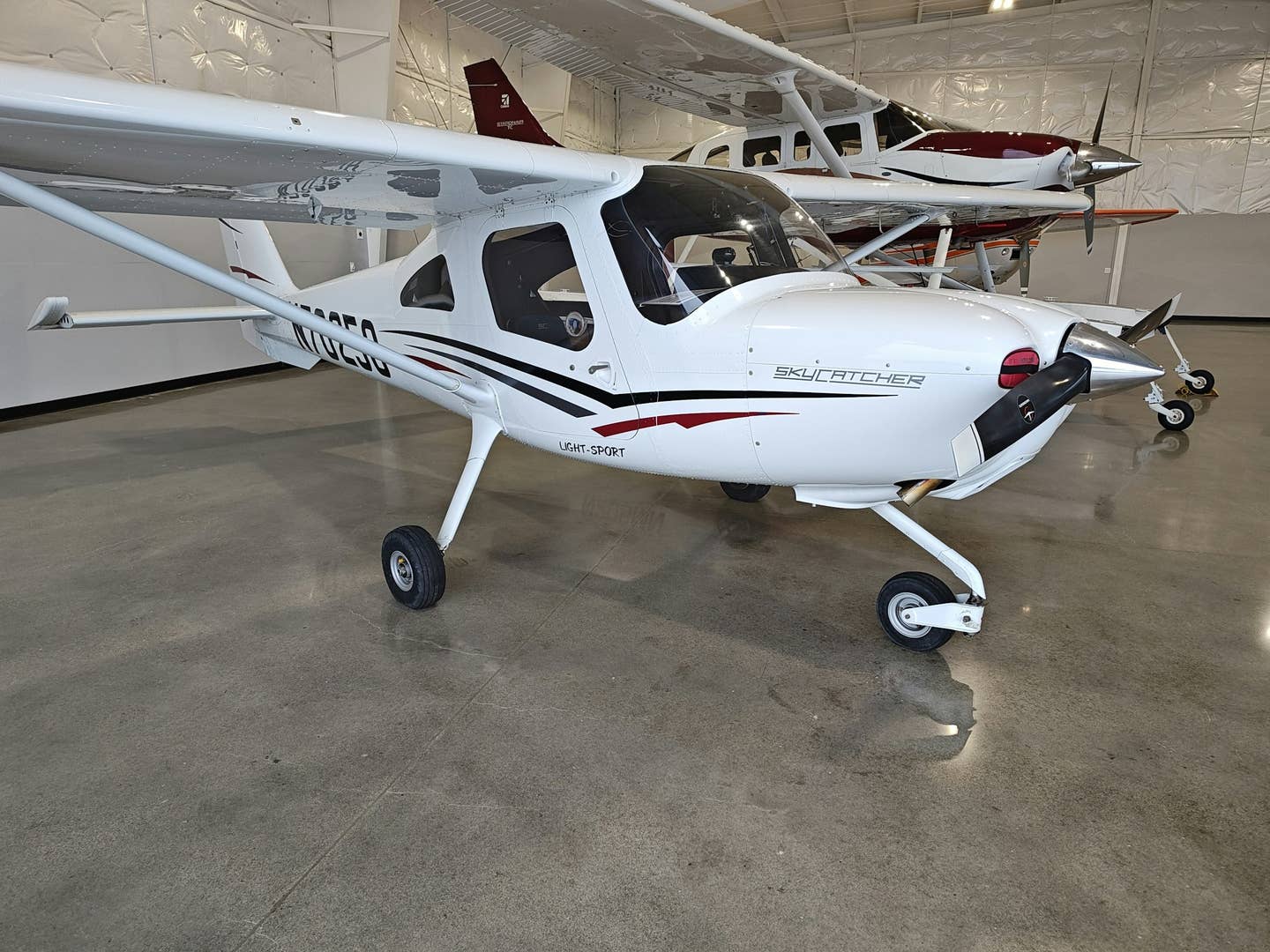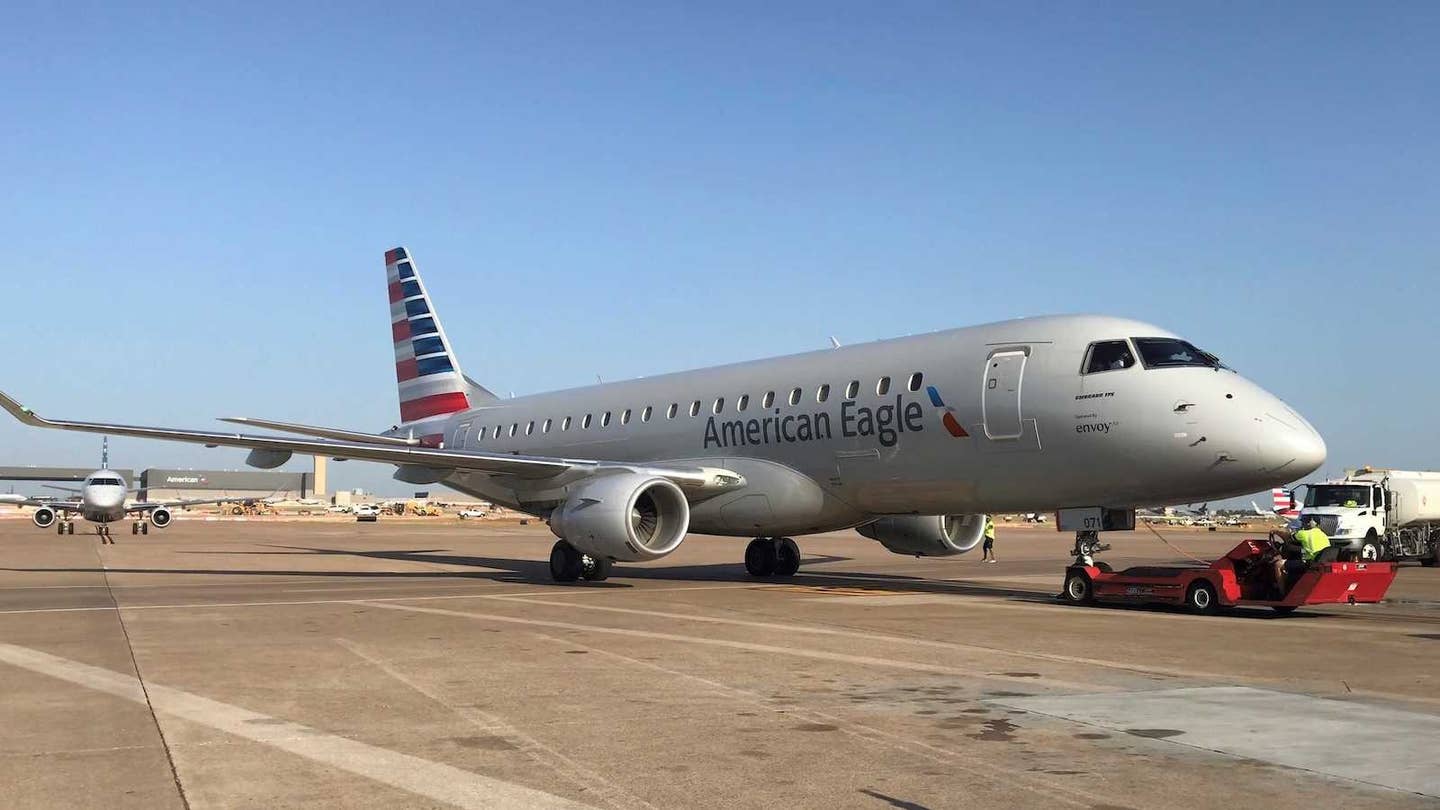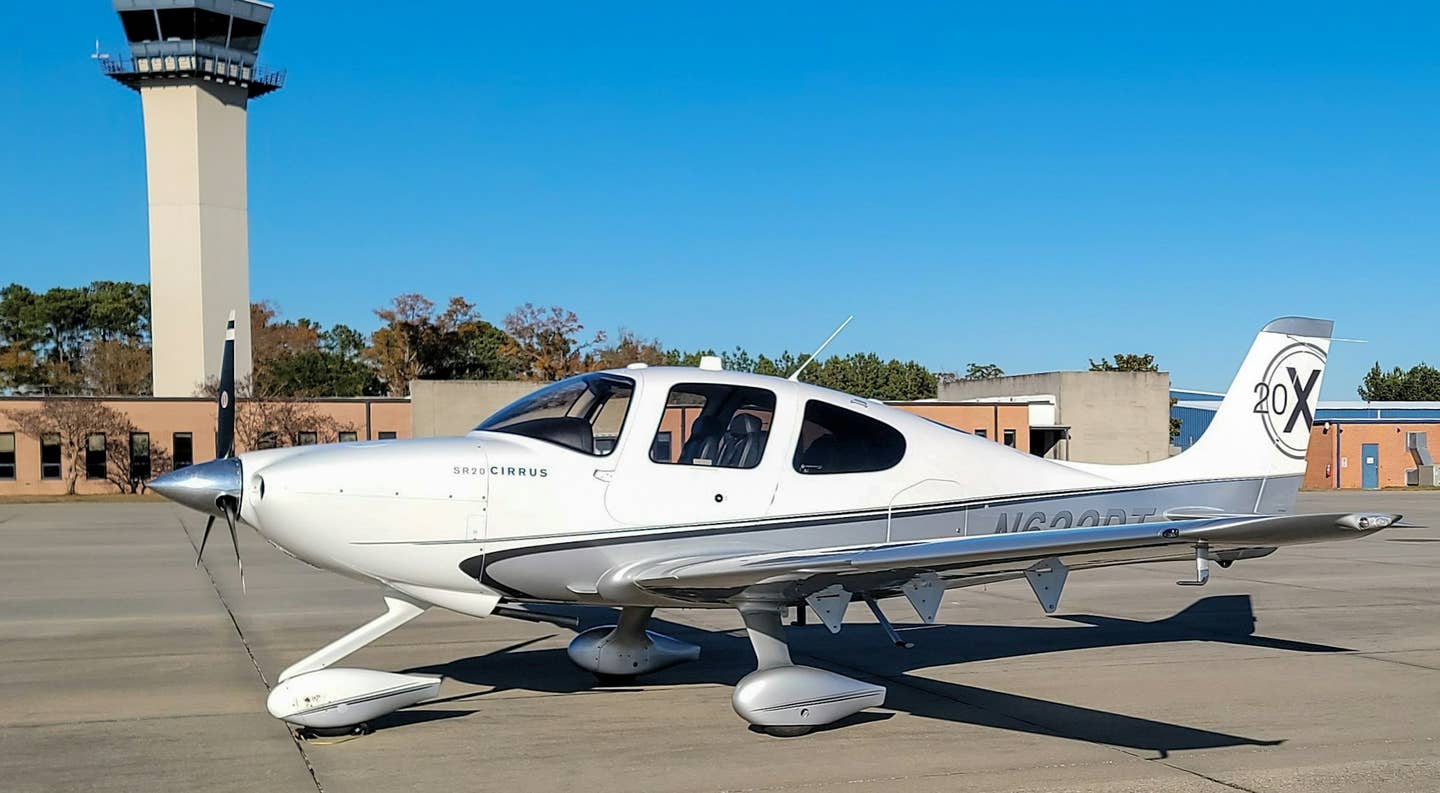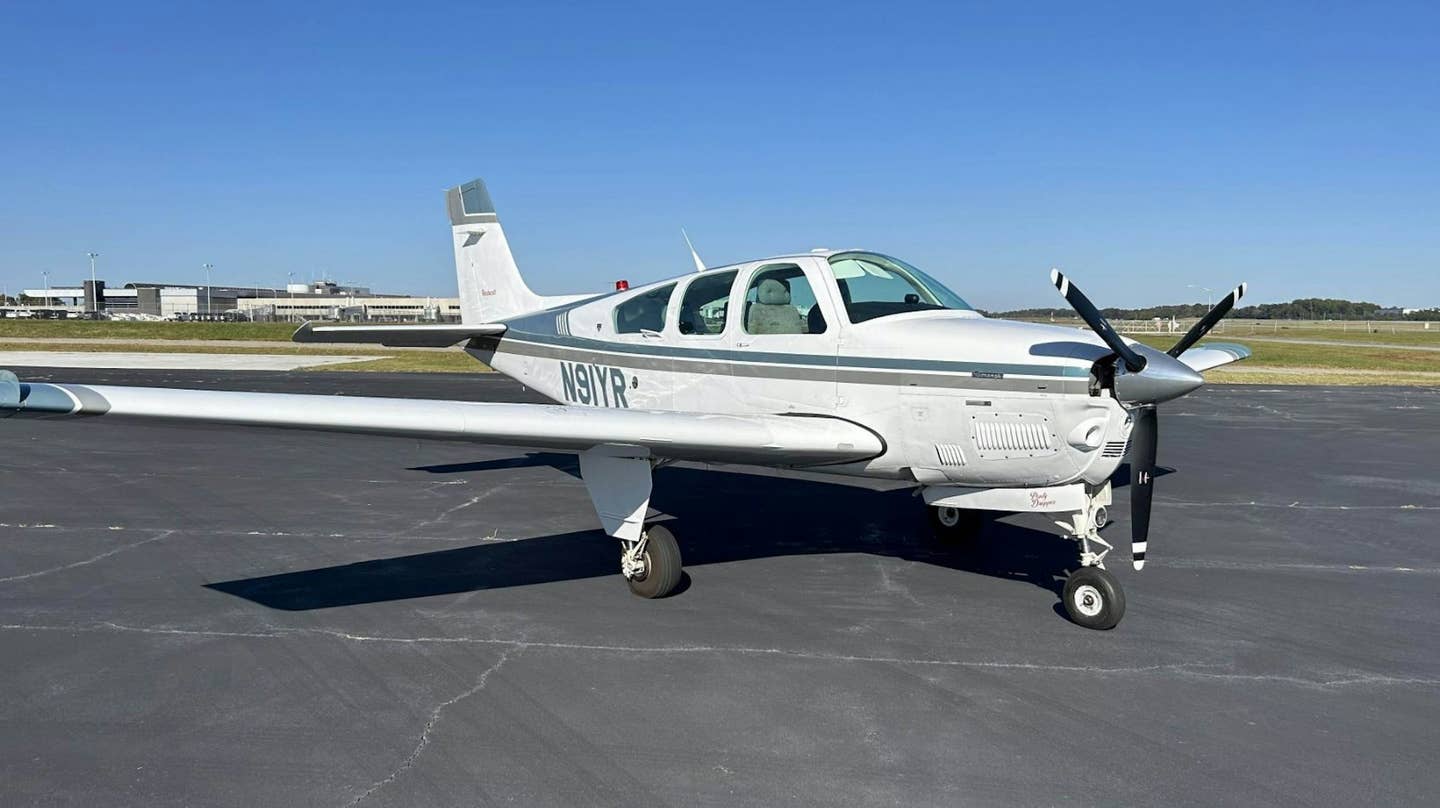
Jack Roush and two of his favorite mounts.
The Beech Premier IA is the fastest business jet that you can fly by yourself so it's no surprise that Jack Roush, who owns five Sprint Cup NASCAR race teams, owns a Premier to fly to and from his many business locations, and to race tracks spread across the country.
Roush is like most pilots in that he had always wanted to learn how to fly. He was born with the natural curiosity about all things mechanical that is also common to most pilots. But he was born with uncommonly good mechanical talents that led him first into building and racing cars.
Drag racing was Jack's first passion and from 1966 to 1979 he raced and won on the national Pro Stock circuit. Though he was apparently a talented driver, it was his ability to improve on existing engines and cars that made him a success in business. Soon he was so busy building engines and cars for others there was little time left for driving.
The next racing venue he conquered was road racing, winning the 10 out of 10 Daytona 24-hour endurance races that he entered with cars and engines that he created, or at least highly modified. Building engines that delivered maximum power, but had the durability to run to the finish, built his reputation and expanded his business.
By 1988 NASCAR was starting to break out of its Southern homeland and become a national sport so it was natural that Roush would see an opportunity to grow with stock car racing. In 1988 he teamed up with the talented Mark Martin to race what was then the Winston Cup circuit, the top level of stock car racing. Roush and Martin didn't win a race that first year, but by the following year they were winning races.
With NASCAR expanding so fast it became clear that the only way Roush could get to each track for the race, plus spend time at Roush Industries that makes high-performance automotive components in Detroit and his NASCAR headquarters in Concord, North Carolina, was in his own airplane. His first was a Cessna 421 with a pilot he hired to fly it.
Roush and his pilot were flying the 421 about 400 hours a year, and Jack spent the time in the front seat gaining experience in all kinds of weather, but not logging any time as formal instruction. By 1993 he wanted to take command so he enrolled at a Florida flight school and quickly became a private pilot. In short order he added the instrument rating and commercial certificate and was on his way. He also earned an ATP certificate after logging the required hours.
It quickly became clear to Jack that a jet is what he needed for his frequent and varied-length trips. And he wanted to fly it himself so the Cessna CJ was the obvious choice in the 1990s. He flew his CJ for 3,500 hours, overhauling the Williams engines once, and flying them to overhaul a second time. He had excellent success with the CJ flying it 400 and more hours a year all over the country, but more speed was always high on his wish list.
Just over two years ago he took a demo flight in the Premier and was hooked by its Mach .80 maximum speed, which equals 459 knots true airspeed. Even when not flying at optimum altitudes the Premier trues 430 to 440 knots, giving it a big speed edge over the original CJ. The deal was done, and Jack bought a demonstrator that had around 100 hours in the logs. He has flown the Premier just short of 800 hours in two years and is in the cockpit several times a week.
Though he loves the jet to go places, Jack's passion -- and livelihood -- is linked to pistons, so how could he not be drawn to the most glamorous piston engine of them all, the Rolls-Royce Merlin.
Because the Merlin is so closely identified with the North American P-51 Mustang, Roush had to have one. And then more Mustangs. One was painted in the "Old Crow" colors of ace Budd Anderson and for several years Roush graciously welcomed Anderson to fly it at big events like Oshkosh.
Jack's most recent Mustang is a rare "B" model, the first in the P-51 series to be powered by the Packard-built Merlin engine. The airplane was in terrible condition and many fundamental airframe components had to be built new from scratch using North American's drawings for guidance. The finished airplane -- like all machines Roush drives or flies -- is perfect in every detail. The "B" model was also first to have drop tanks, and originals are hard to come by so Roush builds exact replicas in his composite shop.
The P-51 was one of a few warbirds to be certified by the FAA in the Limited category after the war. That means you can operate the Mustang much like any other airplane without the restrictions placed on the Experimental Exhibition category that covers most warbirds. Though nearly all Mustangs still flying are the "D" model with the familiar bubble canopy, Roush was able to convince the FAA that his "B" model belonged in the Limited category too.
As Roush became ever more involved with Mustangs it became obvious that there was no shop that was capable of overhaul and repair of the Merlin engines to his standards, or those of the FAA, so he created his own. Jack has a huge collection of original spare parts and engine cores and has received FAA approval to make a number of improved parts from scratch. For example, the people in the Roush Merlin shop have a new design for connecting rods -- one of the less robust components in the engine -- and are in the process of gaining FAA approval to manufacture the part. Roush has tackled even something as basic as sparkplugs for the Merlin. The original plugs are almost impossible to find, and don't work all that well in any case, so the Roush Merlin team identified a current production automotive-type plug, earned FAA approval, and have experienced good results and much reduced cost.
The big cast parts such as the cylinder heads and engine block are the economically irreplaceable parts of the Merlin because the cost to create the tools to make new castings is so high. That's why Roush spends a great deal of effort trying to convince pilots to preserve Merlin engines, or at least not fly them to the point of destruction, so that the core of the engine can be rebuilt and fly on almost indefinitely.
Roush also builds engines for the four-wheel Mustang in partnership with Ford. Over the years he has created hopped up versions of the Ford pony car with the most recent being the Roush P-51 featuring a 510 hp V-8 under. In addition to the engine, Roush has modified almost everything else from a stock Mustang including the performance components, and the exterior with new panels front, rear and sides. Only a few hundred are built and then sold through cooperating Ford dealers. The P-51 Mustang car is street legal in every respect, carries a typical warranty and is supported by Roush and Ford, but is as close to a track-ready car as you can drive down the road.
To see more of Jack's unique flying and racing life he invited me along on a typical day. A typical Tuesday, to be exact. Roush uses his Premier to fly home after the weekend NASCAR race, wherever it may be, and then spends Monday looking after the Roush Industries operation in Detroit. One of the latest projects there is a propane-powered conversion aimed at trucks and other fleet vehicles. Though propane has about 17 percent less energy potential per gallon than gasoline, very favorable federal tax credits aimed at reducing greenhouse gases actually makes the cost of operating propane-fueled vehicles much less than for gasoline. We drove around town in a propane converted Ford pickup and there was no difference from the gasoline version except at startup, where it takes a couple seconds after you turn the key for the engine control computer to finish its checks and start the engine.
Tuesdays are devoted to the Roush Fenway Racing operation at Concord, North Carolina, which is just northeast of Charlotte. Twelve-hour days appear to be the norm for Roush, and he thinks nothing of putting in 16 hours, and during the long NASCAR season he goes seven days a week. So it was 6 a.m. at the Roush hangar at Willow Run Airport west of Detroit when Jack hit the button to raise the hangar door. He hooks up the tow bar himself, drives the tug to pull the Premier out of his hangar, drives the tug back in, closes the door, pats his Mustang and T-6 on the cowling and heads out for another day of airplanes and cars.
Instead of the usual direct flight to Concord today's mission included a stop at Madisonville, Kentucky, to drop off a couple of Roush people to conduct testing on a drag racer. It was cold and windy in Detroit with a ceiling of 900 feet. With 3,000 pounds of fuel, three passengers plus me observing from the right seat, the Premier weighed 12,190 pounds for takeoff, which is 310 pounds below its limit.
The Premier has a rather small swept wing designed for high cruise speed so its runway speeds are a little higher than on other light jets. The flaps are huge, and very effective, which helps to make up for the small wing area. At our weight and with the cold air temperatures V1 decision speed was 105 knots, rotation at 111, and best angle of climb speed should one engine fail (V2) was 124 knots.
I was immediately impressed with Roush's piloting technique because he is so methodical and decisive as his hands moved around the cockpit making pre-takeoff checks. I have found that the best pilots are those who have sound habits and don't deviate from them. Jack and his team are willing to push the envelope into every corner on a race track, but when he is in an airplane, any airplane, he operates entirely by the book.
Jack tells me he has always been aware of the keen difference between the risks of driving and flying, but even more so after he nearly died in an airplane crash in 2002. A friend had an AirCam, a twin-engine amateur-built experimental airplane that has a high wing with the engines mounted in pusher configuration. The tandem fuselage is open and slung below the wing and engines. Roush failed to see a high-tension power line not far from the airport and he hit the wire. His last memory, before waking up in the ambulance, was seeing the wire approaching at the last second and trying to duck out of the way.
The impact with the wire flipped the AirCam in a nose-down plunge into a pond below and Roush was pinned under water for several minutes. A witness rushed to his rescue but he was underwater for at least six minutes by best estimate. The only available explanation for why he didn't drown is that being unconscious when he hit the water retarded his breathing instinct and prevented him from sucking in water. It was either that, or divine intervention, or maybe both. His leg was badly busted up in the crash but despite all odds he recovered essentially full use of all the damaged parts.
As we climbed out Roush let the Premier accelerate to 250 knots, a good combination of forward speed that gets you down range, fits into traffic and still yields a good rate. In just 18 minutes we were at FL 380 where the air temperature was seven degrees above standard. The Premier accelerated to Mach .75 for a true airspeed of 435 knots. Fuel flow was 980 pounds per hour total. That speed makes the successful racer in Roush just sit there and smile.
We were vectored for the GPS approach at Madisonville where the ceiling was also about 900 feet, but the wind was gusting directly across the runway. Roush flew the approach perfectly and made a great landing despite the crosswind. We added fuel back up to near the 3,000-pound level and were soon climbing out headed for Concord. This time the controllers held us at a final cruise altitude of FL 350 and we reached it in 17 minutes despite two level offs on the way up. At that level the Premier accelerated quickly to Mach .79, which is 457 knots true. That brought an even bigger grin.
The visibility at Concord wasn't bad at about two miles, but the ceiling was at 300 feet, just 100 feet above the decision height on the ILS approach. Another perfectly flown approach and good landing. He clearly has confidence in the Premier, and his flying capability.
The Roush-Fenway operation at Concord is simply amazing. Each racing team needs an average of 16 cars for the season, all built from scratch by Roush. The chassis of the cars is made primarily from beefy steel tubes welded together. NASCAR dictates almost every detail of the car's shape and construction, but there is some room to make potential gains in design and placement of the suspension components. The engines -- also built by a Roush business -- are also tightly regulated, but seemingly minor changes can greatly impact power output and durability. Roush is one of only a few teams racing Fords on the NASCAR circuit and the basic components of the engine must come from the Ford specialty parts catalog, but everything else is customized by his operation.
The cars are built in a common fabrication shop but the final finish work and setup for race day is done by the individual race teams. So even though the Carl Edwards number 99 car began life in the same fabrication shop, it will never be touched by the number 16 team of Greg Biffle. All five teams are owned and operated by Roush Fenway Racing, but the entire staff and equipment stays with each individual team.
An aviation inspired safety feature Roush developed was the rooftop spoilers you see flip up when a NASCAR racer gets sideways or worse. The car's aerodynamics are all designed to help keep it down on the track when moving forward, but those features all work against a car when it spins, slides or starts moving backward. In that case the airflow is working to flip the car instead of keeping it upright. Roush realized that spoiling the lift created by this airflow over the roof could help, so square spoiler panels that are literally sucked up by the errant airflow were installed on each car's top. The results have been far fewer rollovers and flips. And the spoilers operate entirely from aerodynamic forces like the leading edge slats on a Sabreliner or F-86 so there is no mechanical linkage or other actuator required.
Roush teams also compete in the second tier Nationwide NASCAR series so dozens more cars must be built, maintained and repaired for that program. And he even competes in the pickup truck series so there are more vehicles and engines to be built and maintained.
A big part of the operation at Concord is maintenance and repair. Since NASCAR drivers are so fond of trading paint, a car almost never comes back from a race without needing at least cosmetic work. And often huge areas of the body skin must be replaced along with suspension components. Engines get at least a complete teardown and usually a total rebuild, as do other parts of the power train including transmissions and rear ends.
And the human part of the racing machine also gets special treatment at Concord with a comprehensive physical training facility and mandatory workouts for the pit crew. The crews also hone their rapid tire change and refueling skills at a special practice area that has a pit wall and all necessary equipment to replicate the real track pit. I watched a driver roar into the practice pit with crew jumping over the wall before he braked to a stop. The effort looked good to me, but not to the coaches who had the crew do the same routine again, and again for who knows how long.
Roush is the only team owner who sends his entire crew to the track in his own airplanes. He owns Boeing 727s that fly the entire teams plus other support staff to the track, and then gets them back home late Sunday night, a feat that would be impossible without company operated airplanes.
The previous race had not gone up to Roush standard with several pit crew mistakes, and some mechanical issues, so Jack appeared to spend the day at Concord in a series of meetings reminding people of what he expected. I was glad to be out touring the shop and not getting my butt chewed as some team members clearly were.
A little after six it was time to head back to Willow Run. By now areas of heavy rain had moved over the Detroit area and Jack and I were looking at them on the XM Weather display on the Collins Pro Line 21 system in the Premier. A gap had formed in the heavy precip just to the west of Willow Run so Jack negotiated a new routing that took us through that gap. The air was moderately rough but the small and flexible wing of the Premier gives a good ride in the turbulence.
It was dark, raining, and visibility was down to a mile or so for the ILS into Willow Run, and again Roush turned in a stellar performance. After landing he insisted I couldn't help get the Premier into his hangar so I sat in the warm, dry cockpit while out in the near freezing rain he hooked up the tug and backed the Premier expertly between the Mustang and T-6. He does everything the Roush way.
I came away impressed. Roush expertly flew three legs in poor weather and did a day's work in his racing business that could not have been accomplished any other way. The Premier really showed off its speed and good flying qualities under poor conditions. Roush is quick to tell you that he is one lucky guy, but I got to see first hand how that luck has been made with very long days and seemingly endless energy to do everything just right. Next time you tune in a NASCAR race and see a Roush Fenway team think about the number of airplanes that it took to make that happen. And how he still finds time to preserve Mustangs and the Merlins that make them magical.

Sign-up for newsletters & special offers!
Get the latest FLYING stories & special offers delivered directly to your inbox

